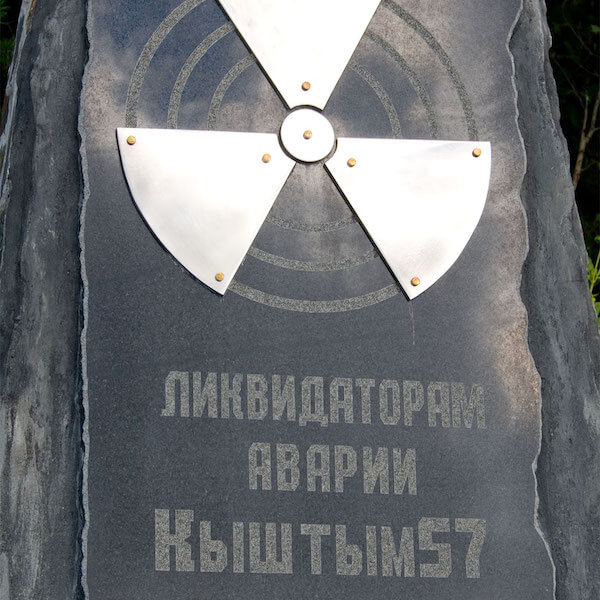Electricity

Nuclear power plants produce about 10% of the world's electricity. Coal 38% and wind 4%. Source
Size of Chernobyl Exclusion Zone. Likely heavy contamination of over 2,000 kBq/m² (normal < 1 kBq/m²). Nuclear fallout in less than two hours. Uninhabitable for hundreds of years.
Likely higher contamination of around 500 kBq/m² (normal < 1 kBq/m²). Nuclear fallout in less than seven hours.
Hint: The circles show what could happen if there was an accident similar to Fukushima or Chernobyl. The spread of radioactive substances varies considerably and depends on wind direction, speed and geological formations. Based on data from Chernobyl, it ranges from no contamination (just 50 km away) to heavy contamination (1,500 km away). Large areas (continent size) had at least a weak contamination of 4 kBq/km².
Click on the map to see the distance of the nearest plant from there (nuclear power plants near me). Also see the estimated time for fallout and contamination. The calculations are based on data from Chernobyl and Fukushima (1, 2, 3).
Examples: View only operational plants with reactors older than 40 years or currently under construction. Warning: Filters affect the number of map points, summary and nuclear power plant list at the bottom.
| Status | |
| Country | |
| Min. age | |
| Max. age |
Based on your filters
| Reactors | |
| Plants | |
| Megawatts | |
| Average age | years |
Based on your filters
Did you know?

Nuclear power plants produce about 10% of the world's electricity. Coal 38% and wind 4%. Source

The radioactive fallout from the Chernobyl disaster was 400 times greater than that from the atomic bombing of Hiroshima.

Today, one nuclear reactor costs around $10 billion. Below are the average prices for each energy source. Power plants use the latest technology and are built in the US. Prices are in US cent per kWh. Source

Everybody knows about Chernobyl and Fukushima, but the third worst nuclear disaster happened in Russia in 1957. The plutonium production site of Mayak near Kyshtym exploded after the cooling system failed. About 20,000 km² (8,000 mi²) were contaminated (equivalent to an area the size of New Jersey or Slovenia). The Soviet government kept this a secret until 1989.

This is what uranium looks like as natural uraninite. Nuclear power plants use it as a primary energy source. One kilogram of pure uranium contains as much energy as 3 million kg of Cole. In practice, reactors do not need such a high quality of uranium. It's enriched to only 3% (90% for nuclear bombs). Uranium is only weakly radioactive and can be found nearly anywhere. It's 40 times as abundant as silver. After use, it becomes extremely dangerous radioactive waste like cesium and strontium. In the Middle Ages, it was used to color glass green or yellow.

Everyone knows that radioactivity is dangerous, but why? A material is radioactive if its atoms are radioactive. An atom is radioactive if it's unstable. An atom is unstable if its atomic nucleus (center) is too large and has too many or too few neutrons. An atom always wants to be stable. To do so, it throws out parts of itself until it's stable and no longer radioactive. These parts get thrown out at very high speed and power. If a particle collides with atoms from a human cell or DNA, it could destroy it or—worse—change its behavior. The cell would then grow uncontrollably (i.e. cancer).

A nuclear power plant includes three parts.
1 Inside the containment building, a reactor uses nuclear fission to produce heat. This is used to turn water into steam.
2 Inside the second building, the steam is used to drive a turbine. This turbine is connected to a generator to produce electricity.
3 The cooling tower turns the steam back into water. The process starts all over again.

Potassium iodide (KI) can block radioactive iodine from being absorbed by the thyroid gland. This reduces the chance of developing thyroid cancer, but it isn't a general radioprotective agent. Please only take potassium iodide on the advice of emergency management officials or public health authorities. There are a few approved products, which can be bought online for around $10 (Source: FDA).
Based on your filters
| Country | Name | Reactors | Megawatts |
|---|
We aim to find all of the nuclear power plants on the planet and create the most complete database on the web. But there may be some that we've missed , such as very old, forgotten and abandoned plants in the former USSR or recently planned reactors in China, India and other countries. There may be also planned or partially constructed but abandoned reactors around the world. Please send us articles, coordinates or anything else you may know about the plant so that we can verify and put it on this website.